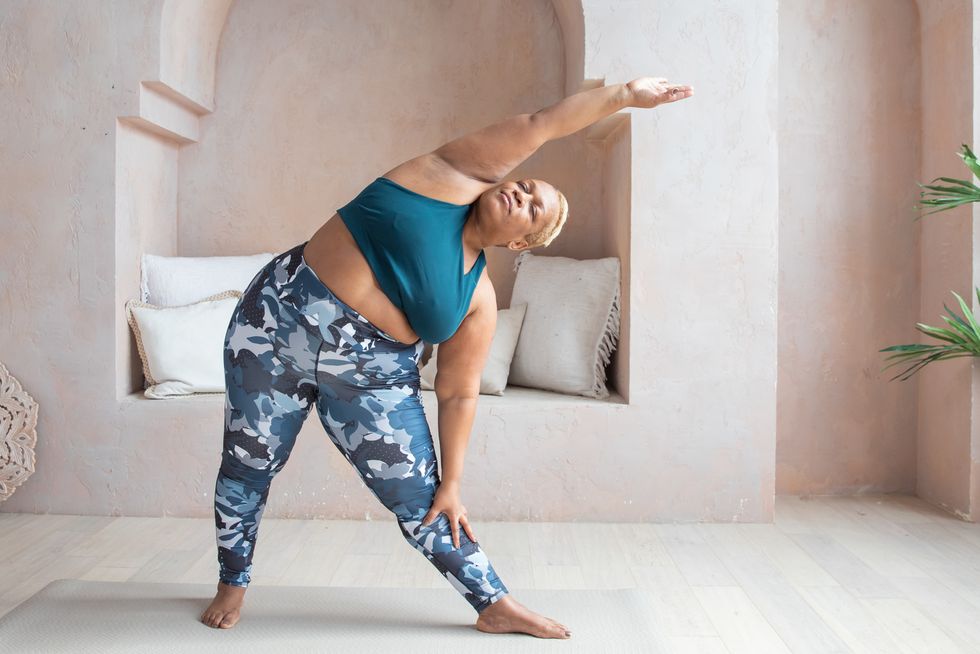Ask ten people what meditation is, and you might receive ten answers—but they could all be right. It’s a technique that extends back thousands of years and has been part of so many civilizations that there are now dozens of methods to conduct it. Still, they share an underlying similarity: “It’s a practice that cultivates inward investigation,” says Diana Winston, director of Mindfulness Education at UCLA’s Mindful Awareness Research Center.
What accounts for meditation’s ongoing and universal appeal? The answer may lay in a growing corpus of data that verifies what many practitioners have stated for years: Meditation has been demonstrated to be useful controlling stress and anxiety, reducing cardiovascular risk factors, managing chronic pain, and increasing sleep
To acquire these benefits, you may worry you have to spend hours each week and attempt to empty your mind totally. But experts think that’s not entirely true. “That’s too intimidating for most of us,” says Rashi Aggarwal, M.D., director of the residency training program and associate professor of psychiatry at Rutgers New Jersey Medical School in Newark.
So, which form of meditation is the best? “The best type for you is the one you’ll actually do,” adds Winston. “Try a few different kinds, even if they’re outside your comfort zone. If you feel more focused and calmer afterwards, then it’s working. Trust your gut. If it feels alien, then don’t do it. See what makes sense to you.”
Ahead, experts describe the main styles of meditation and how to get started to create your personal practice.
1. Mindfulness meditation
What it is: Mindfulness meditation is drawn from Buddhist contemplative traditions; it incorporates breathing sensations and teaches how to refocus one’s attention back to the experience when distractions emerge. It’s a strategy of paying attention to your present moment experiences with a curiosity, openness, and readiness to stay in that exact time without judgment. “It’s both a meditative practice and a quality of attention for any given moment, no matter what you’re doing,” adds Winston.
How to get started: Try free meditations from the UCLA Mindful Research Center or the free app Smiling Mind. Or start with this super-simple mindfulness exercise: Instead of hurrying through your shower, pay attention to the temperature and feel of the water droplets, the fragrance of the soap, and the sound of the water.
2. Transcendental meditation
What it is: You’ll connect with a teacher who gives you a mantra, a word you’ll repea
t over and over to concentrate your mind and move beyond (or “transcend”) your surface level of awareness. The goal is to unlock joy, creativity, and tranquillity.
How to get started: Find a qualified TM teacher for one-one-one instruction here, but you’ll have to pay a fee. Or try this practice, which is similar to TM: Set aside 20 minutes, relax in a comfortable chair, close your eyes, take deep breaths, and focus entirely on your mantra to settle your mind.
3. Cultivation practices
What it is: There are many distinct types of cultivation techniques, which are drawn from a secularization of Buddhist traditions and focus on cultivating feelings of good will toward oneself and others. Typically, you’ll settle into a comfortable posture on a chair or cushion and focus on breath and sending affirming sentiments and repeating happy phrases. The goal is to develop states like as loving-kindness, compassion, joy, or equilibrium, as well as a compassionate attitude toward ourselves and others.
“These practices come out of the mindfulness movement but focus on cultivating a specific positive state of heart or mind,” adds Winston.
How to get started: Check out the free meditations at UCLA’s site, the Center for Mindful Self-Compassion, or the University of Wisconsin’s Department of Family Medicine.
4. Guided imagery
What it is: This sort of meditation often is more goal-directed, that is, you’re focused on a specific aim such as healing, relaxation, or sleep preparation. You’ll be directed through a sequence of instructions with the imaginative use of imagery, such as visiting your favorite beach, feeling the sand beneath your toes, sensing the ocean lapping at your feet, and so on. Because of the step-by-step directions you’ll be provided, it’s frequently one of the easiest sorts for novices, adds Dr. Aggarwal.
How to get started: Listen to the free meditations focusing on specific aims, like physical healing from disease through the University of Michigan Rogel Cancer Center, relaxation through Dartmouth’s Health Service, forgiveness through Ohio State University, or preparing for sleep through MIT Medical.
5. Prayer
What it is: Prayer is a sort of connection that connects one with God or a higher force you individually recognize. While many people don’t equate prayer with meditation, it’s simply a means of directing your attention away from the moment to concentrate one’s heart and mind.
Also Read: Promised income for liking Instagram posts, Noida man loses Rs 9 lakh
“People use prayer in different ways,” adds Winston. “Sometimes it’s about asking for what you want, such as good health. Sometimes it’s about a deep listening, and sometimes it’s about lifting your mind to a higher power and feeling supported or offering thanks.”
How to get started: It’s practiced by most religious faiths such as Christianity, Judaism, Islam, and many more. It can be done using a faith’s set prayers, or it can be as easy as speaking directly to God about your thoughts, hopes, worries, and needs
6. Movement meditation
What it is: This style of meditation incorporates movement to help focus the mind. This may involve particular forms of walking meditations, such as wandering a labyrinth, yoga, or tai chi. Your emphasis is concentrated on the specific motions, usually accompanied by certain breathing techniques. This style of meditation overlaps with mindfulness.
How to get started: Try a walking meditation from Rutgers Student Health Center, Berkeley’s Greater Good Science Center or the University of Michigan, or look for a local yoga or tai chi class near you.
7. Future visualization meditation
What it is: This approach evolves from the practice of guided imagery, but it’s about picturing your future and establishing goals for your health, relationships, home, and work.
“You look ahead and think about having a perfect day tomorrow, six months from now, and five years from now. This helps you get attuned to what you actually value vs what you claim you value, as well as offers emphasis on the abilities you’ll need to reach these goals,” says Dr. Aggarwal.
8. Gratitude meditation
What it is: This technique creates a pleasant mood, hope, and resilience. It can be as simple as sitting quietly, breathing deeply in and out, and thinking of all the individuals for whom you are grateful, but guided visualizations also may be useful.
9. Forest bathing
What it is: In the 80s, the Japanese Ministry of Agriculture created the term “forest bathing” which means to absorb the forest environment. The practice encourages people to spend time interacting with nature, whether it’s walking quietly, sitting in a calm area and focusing on your breathing, or gardening. In reality, an increasing amount of research has demonstrated that being in nature is healthy for us, including enhanced mental health, better sleep, and increased feelings of connectedness during times of social isolation.
How to get started: Spend at least 20 minutes in nature every day. If you don’t have that much time, even a few minutes is better than nothing. Forestry England gives good advice for how to practice forest bathing.
10. Body scan meditation
What it is: Also termed progressive relaxation, this kind of meditation progressively teaches you to focus on different parts of your body from your toes to your face. It’s aimed to make you aware of your physiological sensations and to ease tension. You can do this seated, sitting, or lying down and it is commonly encouraged to be practiced before bed.
How to get started: Try this body scan meditation from UCLA’s Greater Good in Action.








